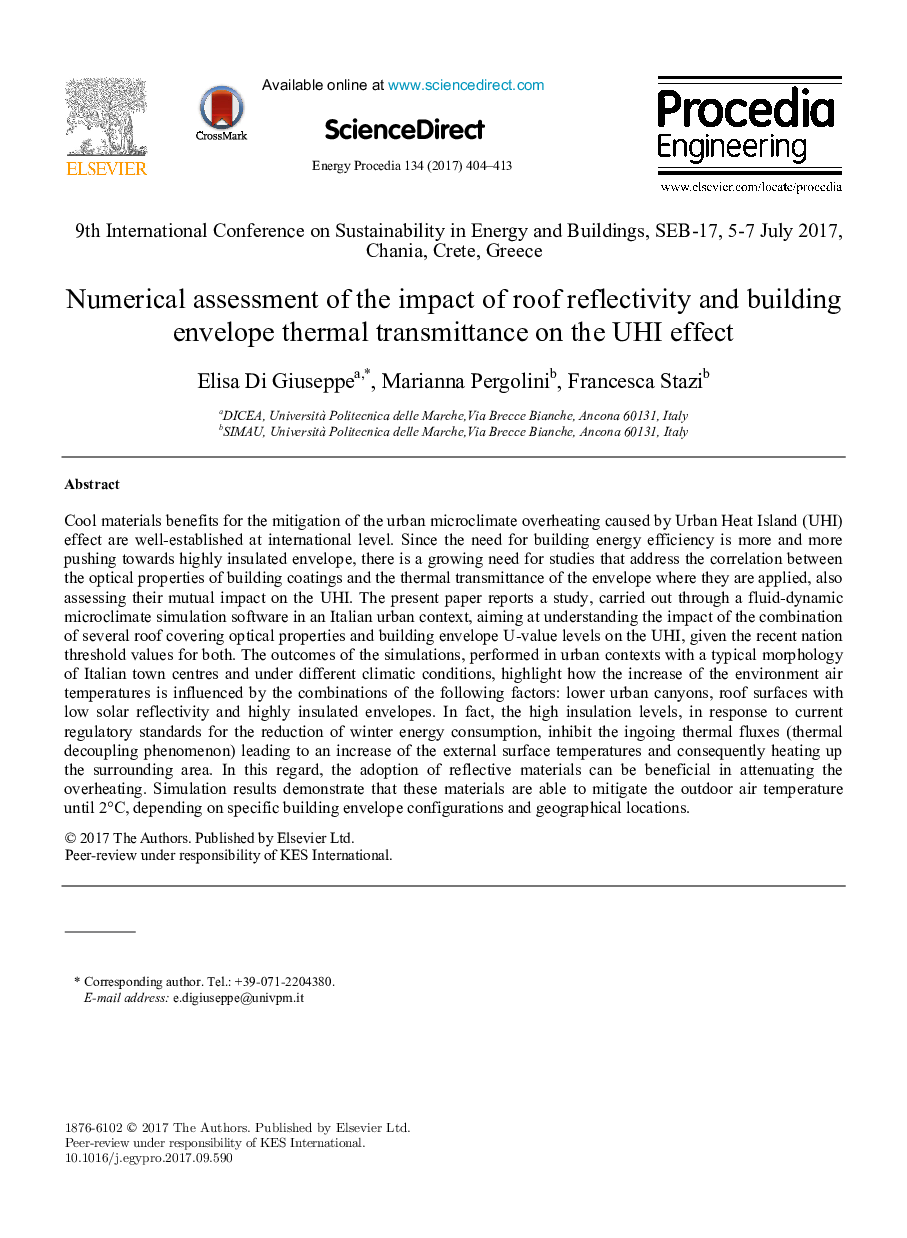| کد مقاله | کد نشریه | سال انتشار | مقاله انگلیسی | نسخه تمام متن |
|---|---|---|---|---|
| 7918790 | 1511101 | 2017 | 10 صفحه PDF | دانلود رایگان |
عنوان انگلیسی مقاله ISI
Numerical assessment of the impact of roof reflectivity and building envelope thermal transmittance on the UHI effect
دانلود مقاله + سفارش ترجمه
دانلود مقاله ISI انگلیسی
رایگان برای ایرانیان
کلمات کلیدی
موضوعات مرتبط
مهندسی و علوم پایه
مهندسی انرژی
انرژی (عمومی)
پیش نمایش صفحه اول مقاله

چکیده انگلیسی
Cool materials benefits for the mitigation of the urban microclimate overheating caused by Urban Heat Island (UHI) effect are well-established at international level. Since the need for building energy efficiency is more and more pushing towards highly insulated envelope, there is a growing need for studies that address the correlation between the optical properties of building coatings and the thermal transmittance of the envelope where they are applied, also assessing their mutual impact on the UHI. The present paper reports a study, carried out through a fluid-dynamic microclimate simulation software in an Italian urban context, aiming at understanding the impact of the combination of several roof covering optical properties and building envelope U-value levels on the UHI, given the recent nation threshold values for both. The outcomes of the simulations, performed in urban contexts with a typical morphology of Italian town centres and under different climatic conditions, highlight how the increase of the environment air temperatures is influenced by the combinations of the following factors: lower urban canyons, roof surfaces with low solar reflectivity and highly insulated envelopes. In fact, the high insulation levels, in response to current regulatory standards for the reduction of winter energy consumption, inhibit the ingoing thermal fluxes (thermal decoupling phenomenon) leading to an increase of the external surface temperatures and consequently heating up the surrounding area. In this regard, the adoption of reflective materials can be beneficial in attenuating the overheating. Simulation results demonstrate that these materials are able to mitigate the outdoor air temperature until 2°C, depending on specific building envelope configurations and geographical locations.
ناشر
Database: Elsevier - ScienceDirect (ساینس دایرکت)
Journal: Energy Procedia - Volume 134, October 2017, Pages 404-413
Journal: Energy Procedia - Volume 134, October 2017, Pages 404-413
نویسندگان
Elisa Di Giuseppe, Marianna Pergolini, Francesca Stazi,